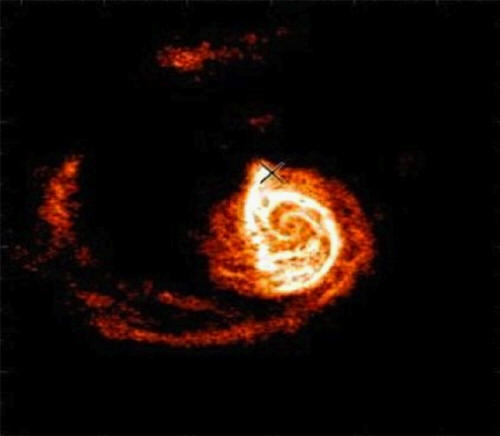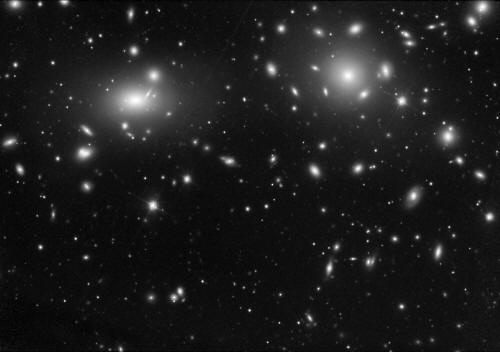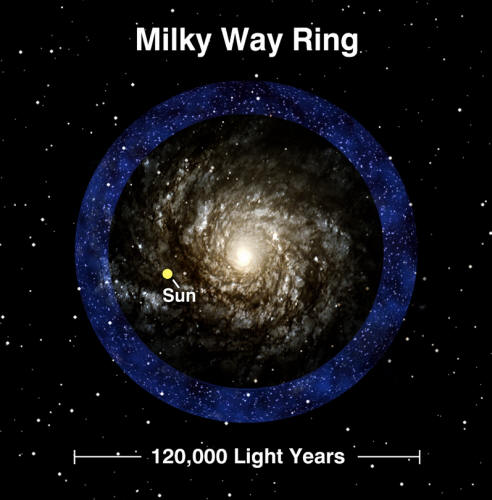|
by Stephen Smith
H1 Hydrogen emissions in the M51 galaxy.
Credit: Sukanya
Chakrabarti/UC Berkeley.
The key to solving a particular puzzle
might simply be clouded by a layer of presumptions that obscure its
true import. Such appears to be the case according a recent
press
release announcing the creation of a computer model to predict the
existence of satellite galaxies.
If they can find disturbances in the
structure it might indicate gravitational perturbations ("tidal
effects") caused by invisible galaxies.
The new predictive model is supposed to help answer the question. Gravitational force exerted by this unseen and undetectable material is thought to sustain not just our galaxy, but all galaxies.
The
supposed lack of luminous matter that can be observed in the visible
Universe led to the original theory of dark matter.
In 1933, Fritz Zwicky was studying the Coma Cluster (above image) and found that his calculations for orbital acceleration and stellar mass were off by a factor of about 160.
He concluded that there must be
something invisible to his instruments somewhere within the cluster
that was holding it together.
Electric Universe theory sees clusters of galaxies, the galaxies themselves, and their associated stars driven by electric currents flowing in dusty plasma.
Birkeland currents create
z-pinch
compression zones between spinning magnetic fields in an electrical
vortex. Compressed plasma forms electromagnetically confined
spheres, some in arc mode, some in glow mode and some with
variability between the two states.
If a cross section could be taken through plasma
trapped in their interstices, it would reveal the familiar
barred-spiral shape of a galaxy. In the image of
M51 at the top of
the page, the intertwining electrical filaments are clearly visible.
Observations from the Sloan Digital Sky
Survey have uncovered such a ring (above image), a separate structure that
surrounds the galaxy at a reported distance of 120,000 light years.
|



